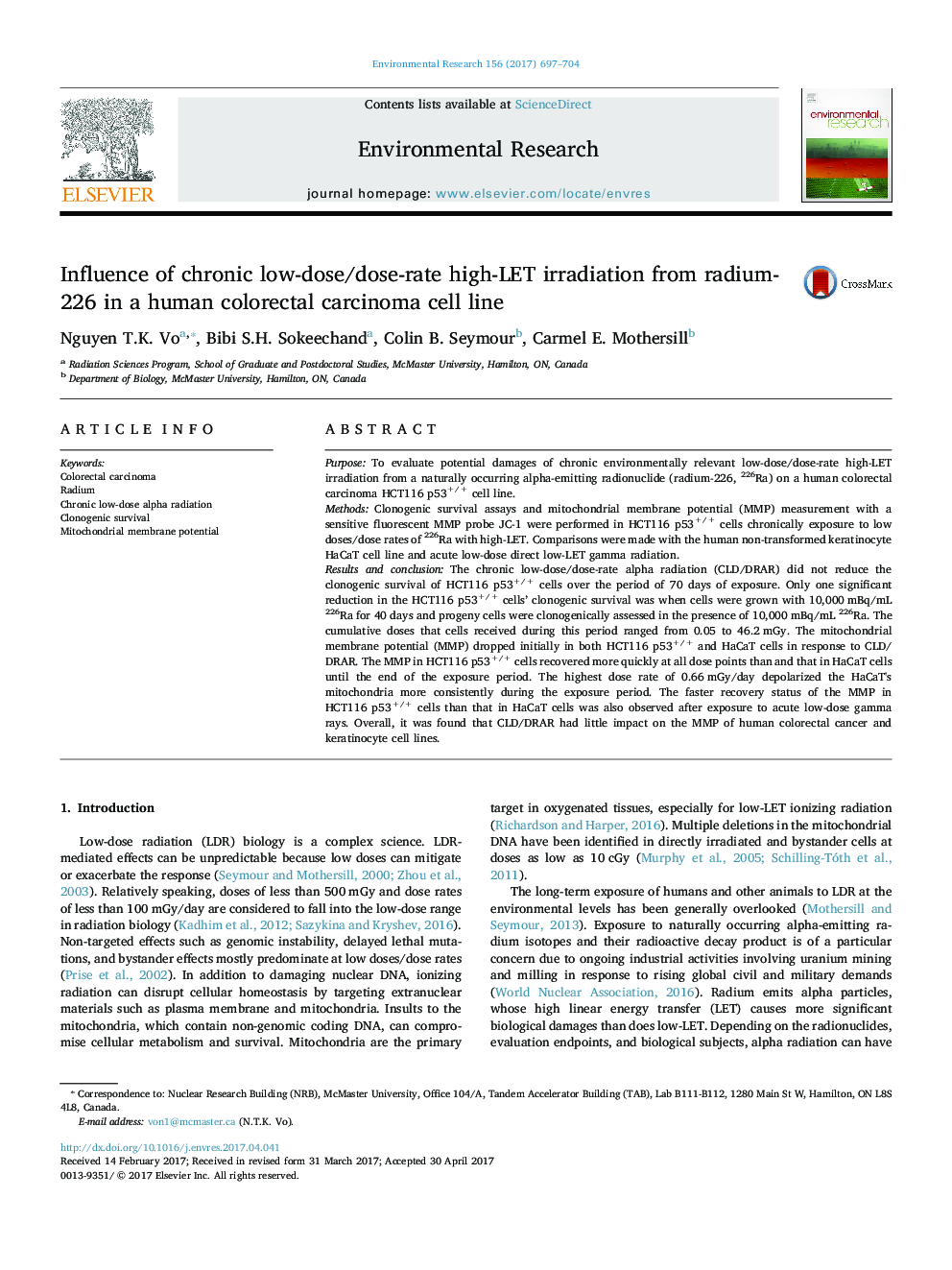| Article ID | Journal | Published Year | Pages | File Type |
|---|---|---|---|---|
| 5756475 | Environmental Research | 2017 | 8 Pages |
Abstract
The chronic low-dose/dose-rate alpha radiation (CLD/DRAR) did not reduce the clonogenic survival of HCT116 p53+/+ cells over the period of 70 days of exposure. Only one significant reduction in the HCT116 p53+/+ cells' clonogenic survival was when cells were grown with 10,000Â mBq/mL 226Ra for 40 days and progeny cells were clonogenically assessed in the presence of 10,000Â mBq/mL 226Ra. The cumulative doses that cells received during this period ranged from 0.05 to 46.2Â mGy. The mitochondrial membrane potential (MMP) dropped initially in both HCT116 p53+/+ and HaCaT cells in response to CLD/DRAR. The MMP in HCT116 p53+/+ cells recovered more quickly at all dose points than and that in HaCaT cells until the end of the exposure period. The highest dose rate of 0.66Â mGy/day depolarized the HaCaT's mitochondria more consistently during the exposure period. The faster recovery status of the MMP in HCT116 p53+/+ cells than that in HaCaT cells was also observed after exposure to acute low-dose gamma rays. Overall, it was found that CLD/DRAR had little impact on the MMP of human colorectal cancer and keratinocyte cell lines.
Related Topics
Life Sciences
Environmental Science
Health, Toxicology and Mutagenesis
Authors
Nguyen T.K. Vo, Bibi S.H. Sokeechand, Colin B. Seymour, Carmel E. Mothersill,
